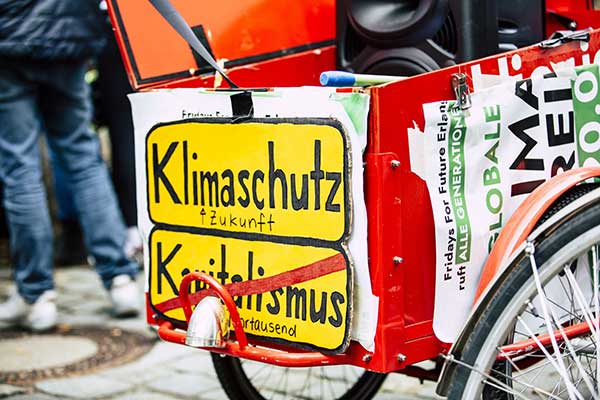Conflicts over oil pipelines continue to grab the headlines. The Dakota Access pipeline has the possibility of being shut down as it faces a court-ordered review, while Michigan’s governor issues an order to shut down the decades-old Line 5 pipeline from Canada as early as May 12, 2021. Meanwhile, the tiny Caribbean island of Barbados has ended the 110-year monopoly of its electric utility company to facilitate progress toward its goal of 100% reliance on renewable energy.
Dakota Oil Pipeline Undergoing Environmental Review
The U.S. Army Corps of Engineers will conduct a detailed environmental impact assessment of the Dakota Access oil pipeline after a court ruled that Native American fears of harmful pollution were not adequately considered in the Corps’ earlier environmental review.
The more comprehensive review is expected to be completed in March 2022. In the meantime, the pipeline will continue to operate, says the Biden administration. The Corps has indicated that it is not aware of any new information that would make it likely to change its earlier findings.
The Standing Rock Sioux and other tribes had filed injunctions seeking a halt to the pipeline’s operations, citing fears that an oil spill under the Missouri River would harm their fishing and hunting rights. Standing Rock also draws its water from the river.
Energy Transfer, the Texas-based owner of the pipeline, insists that it is safe and that shutting it down would have severely adverse economic consequences for others, including North Dakota and the Mandan, Hidatsa and Arikara Nation tribe, who stand to benefit economically.
The court has already taken away a very important federal permit from the pipeline, a decision that was upheld on appeal.
The pipeline provides up to 570,000 barrels of fuel per day from shale oil fields in North Dakota, which is the country’s second-biggest oil producer. Much of that fuel has been shipped by rail, leading to a major increase in outbound rail traffic. Supporters of the pipeline insist that using rail to transport the fuel would be too costly and would disrupt the rail system’s ability to transport other commodities, such as agricultural produce.
Another Canadian Pipeline Shuttered
Michigan’s Democratic governor has ordered the shutdown of the 70-year-old Enbridge Line 5 pipeline by May 12, 2021, citing numerous infractions.
The pipeline, which was built in 1953, carries as many as 540,000 barrels of crude oil and natural gas liquids daily from Alberta, Canada, to the U.S. Midwest and eastern Canada. It runs under the Great Lakes and poses “unreasonable risk” to those waters, the governor said when issuing the shutdown order.
Enbridge insists, however, that the pipeline is safe and in compliance with the law. It is challenging the shutdown order in federal court. The company says it will continue operating despite the order, unless a court rules otherwise.
The shutdown of the pipeline would affect about 40 million people who currently rely on it for energy. Enbridge has suggested building a tunnel for the pipelines under Lake Michigan as an alternative solution. It says closing the pipeline would mean that thousands of long-haul trucks would have to be used to transport the fuel.
This is the second Canadian pipeline carrying oil to the U.S. that faces closure over environmental concerns. In January, the Biden administration stopped the Keystone XL pipeline project that was supposed to carry crude from Alberta to refineries in the U.S.
EIB Reviews Hydropower Project Opposed by Indigenous Groups
The European Investment Bank (EIB) has agreed to take corrective measures following complaints by indigenous groups that a hydrogen power project it is funding in Nepal would have detrimental effects on the local communities.
The bank acknowledged there was cause for concern over environmental and social issues connected with the Marsyangdi Corridor Transmission Line project and announced it had appointed an independent local expert to implement corrective measures.
Nepal received a loan of 100 million euros from the EIB in 2015 for new hydroelectric schemes that would connect to the national grid and help with supplying power to India.
Nepal is looking to hydropower as a solution to its acute power shortages that have hampered its economic growth.
However, the Business and Human Rights Resource Center in Berlin has recorded numerous violations of indigenous land rights and human rights around the world, as lands are sought to accommodate renewable energy installations.
German Court Rules Climate Law Deficient
Germany’s Constitutional Court has ruled that the country’s 2019 Climate Change Act violated the rights of young people since it failed to set clear targets for emissions reductions.
The court found that this failure placed a disproportionate burden on future generations to bear the burden of emissions reductions by putting the needed work off until the next decade and beyond.
The Constitutional Court, which is Germany’s highest court, has directed the government to set clearer emissions targets by the end of 2022. The court stated that one generation should not be permitted to consume larger portions of the carbon budget and make minimal sacrifices to reduce emissions while leaving other generations with “a drastic reduction burden” and consequent loss of quality of life.
The case was brought by nine climate activists. Their argument that the government had violated its constitutional duty to protect them from climate change was, however, rejected by the court.
Conservative ministers had pushed back against tougher measures when the 2019 climate law was being drafted, in part to protect the auto industry and other crucial businesses from additional costs.
Pilot Carbon Capture Project for Wyoming
Wyoming will receive nearly $52 million from the Department of Energy for a carbon capture project hosted in the state.
The Membrane Technology and Research project at Wyoming’s Integrated Test Center is one of two projects to receive a total of $99 million in funding under the DOE’s Phase III funding opportunity for large-scale carbon capture projects.
Wyoming is the largest net supplier of energy in the United States and is responsible for the largest share of the country’s carbon emissions.
Its energy economy is comparable to that of Norway’s and valued at around $15 billion. However, as more states move away from coal for energy production, Wyoming’s lawmakers have been looking for alternative revenue streams.
They allocated $15 million in 2014 to establish the Integrated Test Center, which hosts projects working on solutions to the global emissions problem.
Exxon Makes Over $2 Billion in First-Quarter Profits
ExxonMobil recovered from four straight quarters of losses to record a $2.7 billion profit in the first quarter of 2021, largely as a result of the recovery in oil prices coupled with aggressive cost-cutting measures.
For the same quarter last year, the company had lost $610 million, largely due to the impact of the coronavirus.
The company was able to increase production by 3% to 3.8 million oil-equivalent barrels per day.
Last year, the pandemic had resulted in a major drop in demand for fuel because fewer people were driving and traveling.
To cope, Exxon reduced capital spending by 30% in 2021 and laid off nearly 2,000 workers from its global workforce.
But this year has seen a resurgence in the price of a barrel of oil from a low of $20 in March last year to $60 in March 2021.
$550 Million Solar Power Plant for California
Sonoran West Holdings LLC has received the greenlight to build a 350-megawatt energy storage system on 2,000 acres in the California desert.
The Bureau of Land Management gave final approval for the Crimson Solar Project, which will be built on lands administered by the bureau in an area already designated for development. The solar plant will be built at a cost of $550 million and is expected to provide energy for just under 90,000 homes.
As a result of the project, 10 permanent employees and 650 temporary construction workers will be hired.
President Joe Biden has vowed to make greater use of state lands for renewable energy projects. The Crimson Solar Project will deliver power to the California utility Southern California Edison.
France to Spend 30 Billion Euros to Achieve Carbon Neutrality
France has earmarked 30 billion euros of a 100-billion euro recovery plan for decarbonizing its economy.
Just over 40 billion euros of the 100 billion will come from a European Union scheme designed to help European countries recover from the coronavirus pandemic. The scheme requires that countries prioritize climate smart goals and digital transformation.
France intends to use half of the 40 billion euros it receives toward its climate goals and will provide the remaining 10 billion euros required to roll out its plans.
The funds will be allocated to energy efficiency and the railway sector, among other areas.
Barbados Ends Utility’s 100-Year Monopoly
Barbados announced that it has ended the Barbados Light & Power Co. Ltd.’s more than 100-year-old monopoly on the island’s energy supply. The aim is to open up the market for new players that can help the country move toward full reliance on renewable energy.
The utility will be issued new licenses reflecting its changed status while the government prepares to pass legislation to enable needed changes to the grid and to permit other entities to enter the market for generation and storage services.
Opinion writer: Jewel Fraser
The opinions, beliefs, and viewpoints expressed by the various authors do not necessarily reflect the opinions, beliefs, or viewpoints of Interactive Energy Group, LLC (IEG) or its parent companies or affiliates and may have been created by a third party contracted by IEG. Any content provided by the bloggers or authors are of their opinion and are not intended to malign any individual, organization, company, group, or anyone or anything.
Brought to you by energysavings.com
All images licensed from Adobe Stock.
Featured image:



